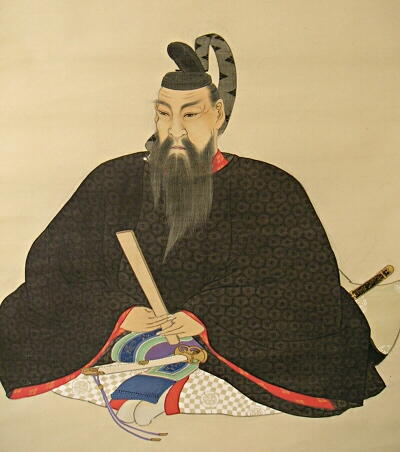 Nightly artist at the Canal City Stage:
Nightly artist at the Canal City Stage:



 Here you have closer look at one of their houses:
Here you have closer look at one of their houses: And here are the inhabitants of the village. Isn't that one happy Yayoi family? By the way, the woman in the back looks very suspiciously like one of my Japanese teachers here at Genki School:
And here are the inhabitants of the village. Isn't that one happy Yayoi family? By the way, the woman in the back looks very suspiciously like one of my Japanese teachers here at Genki School: The central point of the exhibition is a piece of a 'fossilzed' excavation trench:
The central point of the exhibition is a piece of a 'fossilzed' excavation trench:





For comparison, the latter tile is from Korea (unified Silla Period, now BM).
It's a real pity I couldn't take photos because there were really beautiful artefacts here from the Palaeolithic up to modern times. But it seems to be a rule here that museums with expensiv entrance fees do not allow photo shooting whereas the smaller ones, which are free, are also very generous.

This is one of the bridges leading to the Shinto shrineTenmango. This shrine worships Sugawara Michizane (a 9th century sholar) as "God of Scholarship" who was exciled and spent the last two years of his life in Daizaifu. After his death they built a temple to calm down the ghost of Sugawara Michizane who was obviously responsible for a series of catasthrophies.

 Although in folclore the God bird "Kiuso" was worshipped (looks like an owl) there are definitly more turtles here than owls. They are everywhere in the ponds and lakes of this site, there are numerous statues and even the big water basin in front of the temple is featuring the 'kame-sama'.
Although in folclore the God bird "Kiuso" was worshipped (looks like an owl) there are definitly more turtles here than owls. They are everywhere in the ponds and lakes of this site, there are numerous statues and even the big water basin in front of the temple is featuring the 'kame-sama'.
 You have to look closely at the bottom of the basin:
You have to look closely at the bottom of the basin:


 |
| http://umauma-y.com/eiga/Poster/no3151-001.jpg |



and there are regular performances on the Canal City Stage:

The best thing, however is the dancing fountain:


Fukuoka City Museum Entrance Hall

Fukuoka City Museum View from Entrance into adjacent Park
It gives a good overview over North-Kyushu's prehistory and history and houses for example the famous gold seal of the kind of Na:


Unfortunately photography wasn't allowed in the exhibition halls, which means I spare you the archaeological details.
If you have thought that I finally came to an end with the archaeology part, you are wrong. But this is the last thing you will hear about Yoshinogari. On both sides of a road leading to the main tomb there were more than 2,000 burial jars:
 In the tiny but excellent museum on the site you could see the real thing. Alltogether there were 15,000 burials in Yoshinogari. Not bad for a village that was alive for a mere 200 years.
In the tiny but excellent museum on the site you could see the real thing. Alltogether there were 15,000 burials in Yoshinogari. Not bad for a village that was alive for a mere 200 years.

Lets have a quick look inside and than you are done with all the boring archaeology (that is for today :) )







 It might not look too good - but it was delicious; lotus root salad and my all-time favourite, an o-nigiri with umeboshi plum.
It might not look too good - but it was delicious; lotus root salad and my all-time favourite, an o-nigiri with umeboshi plum.